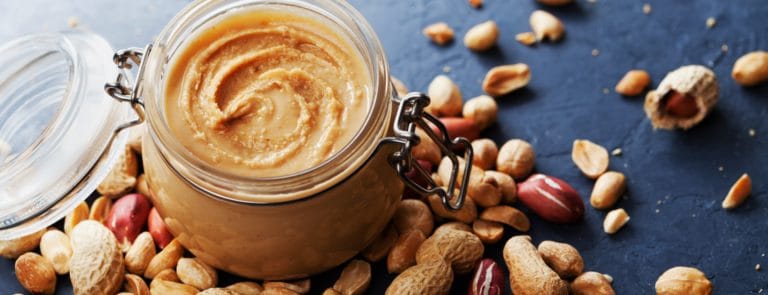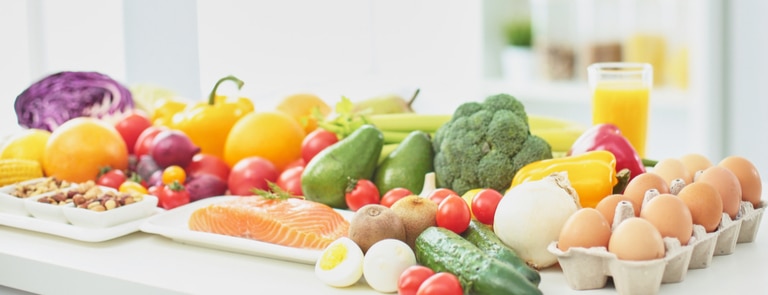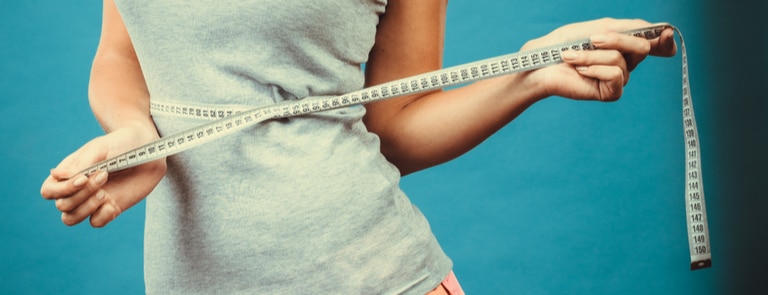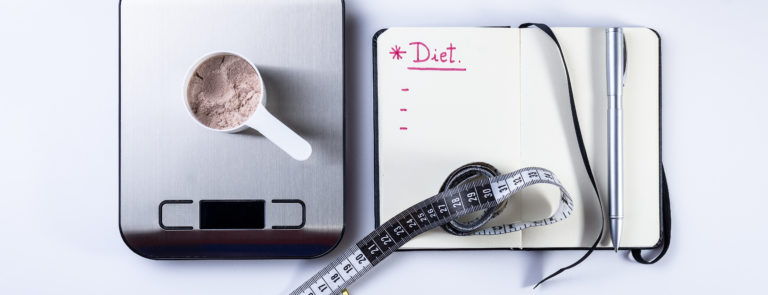15% off €25
How to gain weight – 8 high calorie foods

It’s not uncommon for us to hear about friends, family or colleagues who are losing weight or have plans to drop a few pounds here and there.
There may even be times in our life when we feel we could do with being a little bit lighter ourselves.
This article is focused on the opposite end of the scale where people’s goal is to actually put on weight rather than lose it.
As is the case with most things, there’s a healthy and unhealthy way to do it.
Over the next few paragraphs, we talk you through the fundamentals of healthy weight gain, which includes practical, everyday tips for putting on weight.
We also provide you with a handy list of some of the best food to put on weight – the healthy way.
Reasons to gain weight
Motives for gaining weight vary from person to person
. It’s not uncommon for people to be underweight because of a medical condition.
If you’re planning on gaining some weight, it’s best you try and identify the cause for your current weight, particularly if you’ve suddenly lost weight, as this could be linked to an underlying health condition, such as:1
- an overactive thyroid gland (hyperthyroidism)
- type 1 or type 2 diabetes
- coeliac disease, a condition that prevents the body from absorbing food properly
- eating disorders, such as anorexia nervosa
- body dysmorphic disorder
Being underweight can also lead to nutritional deficiencies, a weakened immune system, fragile bones, and feeling tired.2
You can check if you're underweight by calculating your Body Mass Index (BMI). If your BMI score is under 18.5, your weight may be too low.
Handpicked content: ‘How to calculate your BMI’
Summary
- People may want to gain weight for different reasons
- Being underweight can be caused by an underlying health condition
- It may also lead to nutritional deficiencies, a weakened immune system, and feeling tired
8 ways to gain weight healthily
When it comes to healthy weight gain, you should aim to include foods in your diet that are both calorie-dense and nutritious.
Meanwhile, it’s equally important you aren’t tempted to choose foods for gaining weight based only on their calorific content, such as ice-cream, cheese or fast food (although you'll gain weight, you may well end up eating too much sugar and saturated fat).
This can lead to an increased risk of developing health conditions, such as type 2 diabetes or high cholesterol.
Here are some practical pointers for healthy weight gain:3
-
Eat something regularly
It’s not uncommon for people who are underweight to quickly feel full up when eating.
However, it’s still important they continue to take on calories through their food in order to put on weight.
Eating smaller meals more regularly, for instance, five to six times a day, is a way around this.
-
Choose food that’s full of nutrients
Choose foods such as wholegrain breads, pastas and cereals, fruit and vegetables, dairy products, lean protein sources, and nuts and seeds.
They’re all key for healthy weight gain and are what healthy diets generally consist of.
-
Drink your calories
Drink smoothies or healthy shakes made with milk and fresh or frozen fruit, and sprinkle in some ground flaxseed to boost your calorie intake.
-
Rack up those (healthy) calories
Whenever you eat something, make sure it’s going to help you put on weight healthily.
For instance, grab a handful of nuts, enjoy some lean meat, have a peanut butter sandwich before bed or add an avocado to your lunch. They’re just a few initial ideas to help you get started.
-
Cook with more calories
Add healthy extras to your dishes, such as cheese in casseroles and scrambled eggs, and fat-free dried milk in soups and stews.
-
Enjoy healthy treats
Eating food with zero nutrients, such as chocolate and crisps, isn’t the answer to putting on weight healthily because they’re packed full of excess sugar and fat.
You can still snack, but reach out for bran muffins, yoghurt, and granola bars instead.
-
Get exercising
You don’t have to follow a hardcore exercise regime, but regular exercise, particularly strength training, can help you build muscle mass.
Exercise may also get your appetite going too.
-
Think about when you drink
It’s possible to feel fuller quicker if you have a drink before eating.
Either avoid doing this altogether or enjoy a drink after your meal instead.
Alternatively, if you like a drink while eating, reach out for a high-calorie one, but watch those sugar levels!
Summary
- Healthy weight gain is important when putting on weight
- Include foods in your diet that are calorie-dense and nutritious
- Avoid eating foods for gaining weight based only on their calorific content as you could end up eating too much sugar and saturated fat
Is fast weight gain safe?
Ideally you should aim to gain weight steadily at a rate of around 2lbs per week.4
Don’t worry if your rate is slower, if you’re making progress and seeing the number on the scale go up, then that’s what’s important.5
Fast weight gain isn’t recommended because it may not help you correct any nutritional deficiencies you may have and it doesn't build up muscle mass, which is a much healthier tissue than fat.
While slower weight gain means it takes longer to put on weight, it enables you to put on healthy muscle rather than just unhealthy fat.
Muscle takes more work to develop; around 1/2 pound a week.
The healthiest way to build muscle – and put on weight – is to combine strength training with an increased calorie intake, especially from protein.
Approximately 0.5g of protein per pound of body weight is the ideal daily goal. Foods such as poultry, lean steak, fish, tofu, and dairy are among the best protein sources.
Summary
- Aim to gain weight steadily at a rate of around 2lbs per week
- Fast weight gain isn’t ideal because it may not help you correct nutritional deficiencies and it doesn't build up muscle mass
- Slower weight gain enables you to put on healthy muscle rather than just unhealthy fat
What are calorie dense foods?
Calorie dense foods are exactly as the name suggests, food that are ‘heavy’ with calories.6
They tend to be packed full of high levels of saturated fat, sodium, added sugars, and other simple carbohydrates.
While they may contain plenty of calories, they’re lacking in vitamins, minerals, and nutrients that form part of a healthy and balanced diet.
Examples of calorie-dense foods include processed food, cakes, sweets, fizzy drinks, and mayonnaise.
Summary
- Calorie dense foods are laden with calories and have minimal nutritional value
- They tend to be packed full with saturated fat, sodium, added sugars, and other simple carbohydrates
- Examples include processed food, cakes, and fizzy drinks
8 best foods for weight gain
Here are eight healthy foods that are naturally calorie-dense, so you can gain weight while giving your body the nutrients it needs to feel great!
-
Oats
Although oats are known as a weight-loss diet food, they can also be added to your diet for weight gain, especially when made with whole milk.
Oats are a source of minerals, such as manganese and zinc. They also contain B vitamins and iron.
Make sure you choose the wholegrain oat variety over refined oats, as it offers extra health benefits, such as increased fibre.
The soluble fibre in oats, beta-glucan, may also help lower cholesterol.
It’s easy to make this healthy food high in calories. Just 50g oats made with 300ml whole milk packs 377 calories and 14g fat.7
Adding nuts, dried fruit, seeds or Manuka honey to your bowl will give you extra calories whilst offering even more health benefits.
-
Avocados
As an ultra-healthy fruit, you may not think of avocado as a food to gain weight.
However, despite their reputation as the ultimate health food, avocados are also one of the best foods for weight gain.
Eating plenty of avocado is a great way to add healthy fats, fibre and many vitamins to your diet, including vitamin C, vitamin E and potassium.
Just one avocado contains between 250 – 400 calories and around 23g fat8 depending on the size.
Eating a smaller avocado or half a larger avocado each day alongside your meals and snacks will help top up your calories for steady weight gain.
You can spread avocado on to toast, make guacamole, use it as the base to a pasta sauce or add slices to salads and sandwiches.
If you’re the kind of person that gets full quickly, you can even blend an avocado in with your morning or mid-day smoothie to get calories and healthy fats with every sip.
-
Protein powder
Protein helps us put on mass because it helps build muscle tissue.
However, if you’re underweight, there’s a possibility you become full too quickly when eating high-protein foods, and don’t always feel like finishing your plate.
This is where protein powder comes in, as it can help you meet your calorie count without having to eat large amounts of food.
A protein shake made with whole milk (either dairy or plant-based) can deliver hundreds of calories in just a few mouthfuls.
Protein powders can be made from whey, soy, pea or rice proteins and come in many different types – just be careful to avoid ones that are full of artificial colours and flavours.
-
Tahini
Tahini is a highly effective food for weight gain.
It’s a thick oily dip made from toasted ground sesame seeds. It’s very high in protein and rich in vitamin E, B vitamins and calcium.
At nearly 100 calories per tablespoon9, you should consider adding it to your diet for healthy weight gain.
Tahini can be used as a dip or spread, mixed into hummus and added to dressings and sauces. It’s very creamy and can also be used in baking and stirred into protein shakes or even vegan milkshakes.
-
Nut butters
Nuts are rich in protein, fibre, and healthy fats and can help you boost your calorie intake.
Nut butters especially are wonderful foods for weight gain as they’re easier to consume than nuts alone, allowing you to eat more, especially if you haven’t got much of an appetite.
A tablespoon of peanut butter contains around 100 calories and 16g fat10 as well as being a source of vitamin E and magnesium.
You can choose between a wide variety of nut butters that are available including almond, peanut, hazelnut, cashew and macadamia butters. However, make sure the one you choose one is made from 100% nuts and has no added sugar or salt.
Swirl nut butters into oats, spread on to toast or eat by the spoonful.
-
Dried fruit
Dried fruit’s great for giving yourself a calorie boost in between meals, popping on your meals and enjoying on the go.
And if you find you feel full up fast, they’re great for grazing on without making you feel stuffed.11
To give you an idea of dried fruit’s calorie-boosting qualities, one cup of raisins contains 400 calories.
If you don’t fancy raisins or want to mix things up a bit, then give dried berries, apricots, apples, and cranberries a go too.
-
Healthy oils
Healthy oils are a quick and easy way of adding extra calories to your dishes because all you need to do is use a drizzle of them while you’re cooking!
You may already know this, but there are healthy oils that contain good fats and unhealthy oils that contain bad fats.
Examples of healthy oils include olive oil, which contains monounsaturated fats that can easily add calories to pasta, bread, vegetables, and more.
Meanwhile, canola oil contains Omega-3 (alpha-linolenic acid or ALA) and monounsaturated fats. There’s also walnut and grapeseed oil to consider too, which are ideal as a salad dressing.12
-
Dairy
Dairy products, such as cheese, milk and yogurt, are packed full of calories.13
Sprinkling cheese over your pasta, putting yogurt on top of your granola and drinking a glass of milk with every meal will help you to add calories to your intake throughout the day.
To give you an idea of typical dairy calorie levels, 12oz of 2% milk contains 180 calories. Meanwhile, a cup of low fat vanilla yogurt contains around 200 calories.
Meal ideas for the week
Clinical Nutritionist, Alex Glover, suggests some meal ideas to support your diet and gain weight the healthy way.
-
Monday
Breakfast – 100g oats made with whole milk, one scoop of protein powder drizzled with peanut butter
Lunch – Mozzarella, mushroom and pesto sourdough toasties
Dinner – 100g pasta with sliced avocado, pesto spinach, pine nuts, and sun-dried tomatoes
Snack – 50g nuts
-
Tuesday
Breakfast – Greek yoghurt with maple syrup, walnuts, goji berries, and sultanas
Lunch – Toasted rye bread with avocado
Dinner – Vegan cheesy spinach pasta
Snack – 200g hummus with toasted pitta strips
-
Wednesday
Breakfast – Granola
Lunch – Black bean and quinoa chilli with a handful of shredded cheese
Dinner - Spaghetti with meatballs (use meat or plant-based mince)
Snack – Low-sugar protein bar
-
Thursday
Breakfast – Peanut butter and banana on wholemeal toast with glass of orange juice
Lunch – Chickpea and spinach dahl with naan or chapati
Dinner – Vegetable lasagne with cheese sauce
Snack – Two hard-boiled eggs
-
Friday
Breakfast – Overnight oats with chia seeds, raspberries, and almond butter
Lunch – Sweet potato and coconut milk curry with pilau rice
Dinner – Steamed broccoli, sausages (meatless or your choice) and roast potatoes
Snack – Scoop of cottage cheese on rye bread
-
Saturday
Breakfast – Pancakes with maple syrup, banana, and blueberries
Lunch – If you’re eating out, choose a bean burger with mozzarella cheese and sweet potato fries
Dinner – Veggie bean fajitas with guacamole and sour cream
Snack – Coconut pieces
-
Sunday
Breakfast – Spinach, tomato and asparagus frittata muffins with mixed seeds
Lunch – Veggie roast dinner
Dinner – Bubble and squeak patties with ciabatta
Snack – Handful of dried apricots or, as a slice of vegan chocolate fudge cake as a treat
Takeaway
If you’ve set your sights on putting on weight, it can be tempting to want to do it as quickly as you can, which isn’t necessarily the best thing for your body.
The best way to gain weight is to do it healthily, which involves steadily increasing how much you weigh through a combination of eating foods for weight gain and, in some circumstances, exercising too.
Healthy foods, despite being ‘healthy’ are just as effective, if not more, for weight gain, plus they’re better for your body because they contain plenty of vitamins, minerals, and nutrients to help keep you fit and healthy.
We’re shared some of the best foods to gain weight with you above, but there are many more, as well as plenty more healthy weight gain meal ideas too.
We hope you find this information a useful starting point and that it helps shape your weight gain journey.
Last updated: 9 May 2024
- https://www.nhs.uk/common-health-questions/food-and-diet/how-can-i-gain-weight-safely/
- https://www.nhs.uk/live-well/healthy-weight/advice-for-underweight-adults/
- https://www.mayoclinic.org/healthy-lifestyle/nutrition-and-healthy-eating/expert-answers/underweight/faq-20058429
- https://news.sanfordhealth.org/sports-medicine/weight-gain-performance
- https://www.livestrong.com/article/153162-health-risks-for-gaining-weight-too-quickly/
- https://www.statecollegefitnessconsultantsinc.com/calorie-dense-vs-nutrient-dense/
- https://www.myfitnesspal.com/food/calories/made-with-50g-oats-300ml-whole-milk-373510537
- https://www.myfitnesspal.com/food/calories/generic-1-whole-medium-avocado-82501442
- https://www.myfitnesspal.com/food/tahini
- https://www.myfitnesspal.com/food/calories/peanut-butter-188890731
- https://www.verywellfit.com/foods-to-help-you-gain-weight-2507767
- https://www.verywellfit.com/foods-to-help-you-gain-weight-2507767
- https://www.livestrong.com/article/375588-healthy-food-to-put-on-weight/



